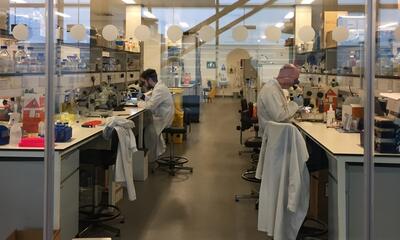
Why Anti-Wolbachia
Why Anti-Wolbachia
A∙WOL is targeting Wolbachia – a type of bacteria that lives inside the cells of the parasitic worms. As the worms are dependent on Wolbachia bacteria for growth, development, reproduction and survival, eliminating the bacteria with antibiotic drugs kills the worms and delivers a new and practical solution for eradicating these debilitating diseases.
Lymphatic filariasis and onchocerciasis are debilitating Neglected Tropical Diseases (NTDs), caused by filarial nematode worms, infecting ~157 million people. They are targeted for elimination or control by WHO, respectively, by 2020 as outlined in the London Declaration on NTDs. A new treatment that is macrofilaricidal (kills adult worms), oral, short-course, well-tolerated, and affordable is a high priority in global health.
The only safe drug treatment with substantial curative activity against these filarial nematodes is the broad-spectrum antibiotic doxycycline. The target of doxycycline is the nematodes’ essential endosymbiont, Wolbachia. Removal of Wolbachia from worms leads to blockade of development, sterility and worm death, but for doxycycline the long treatment length (≥four weeks) and contraindications in children and pregnancy are obstacles to implementation as a public health strategy.
The anti-Wolbachia (A∙WOL) goal is to deliver a new oral drug that provides activity with ≤7 days treatment by exploiting the safe macrofilaricidal activity associated with an anti-Wolbachia mode of action; killing the adult worms; to eliminate filarial diseases.



